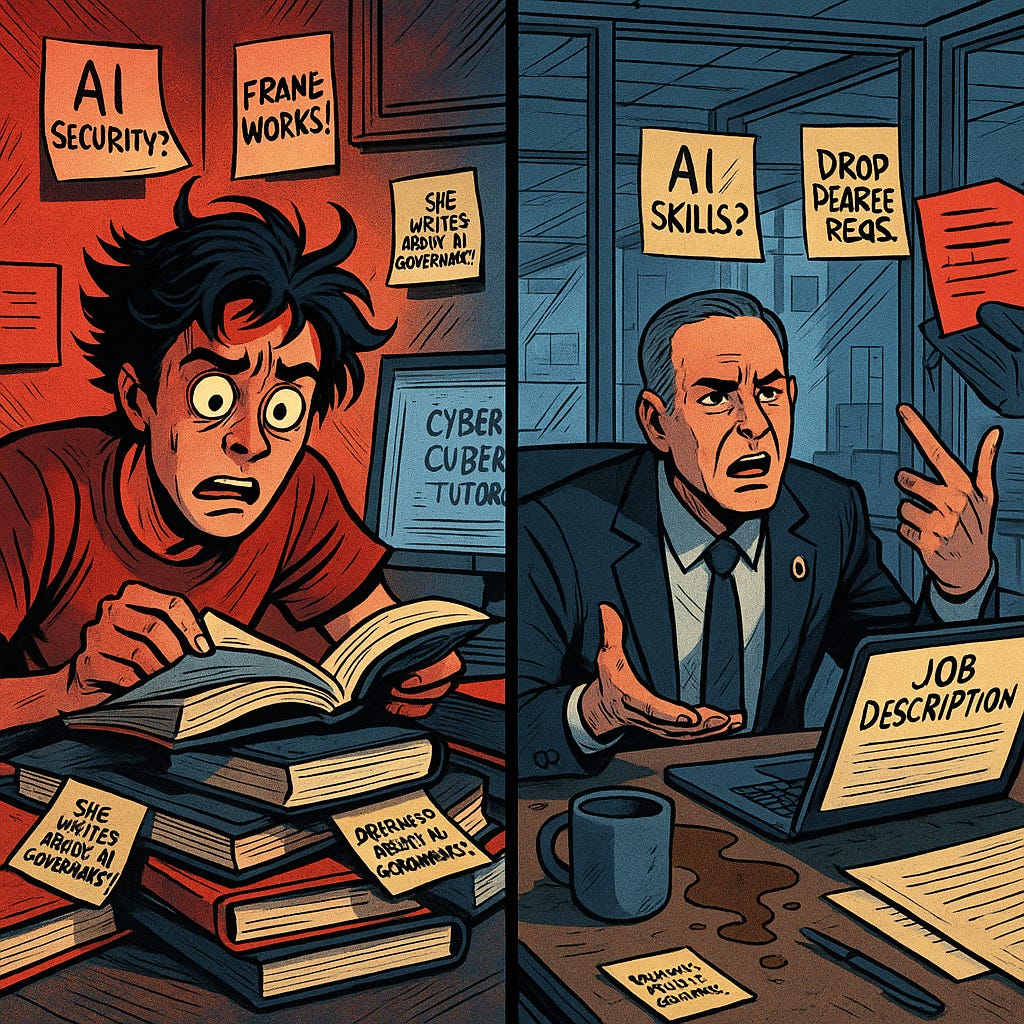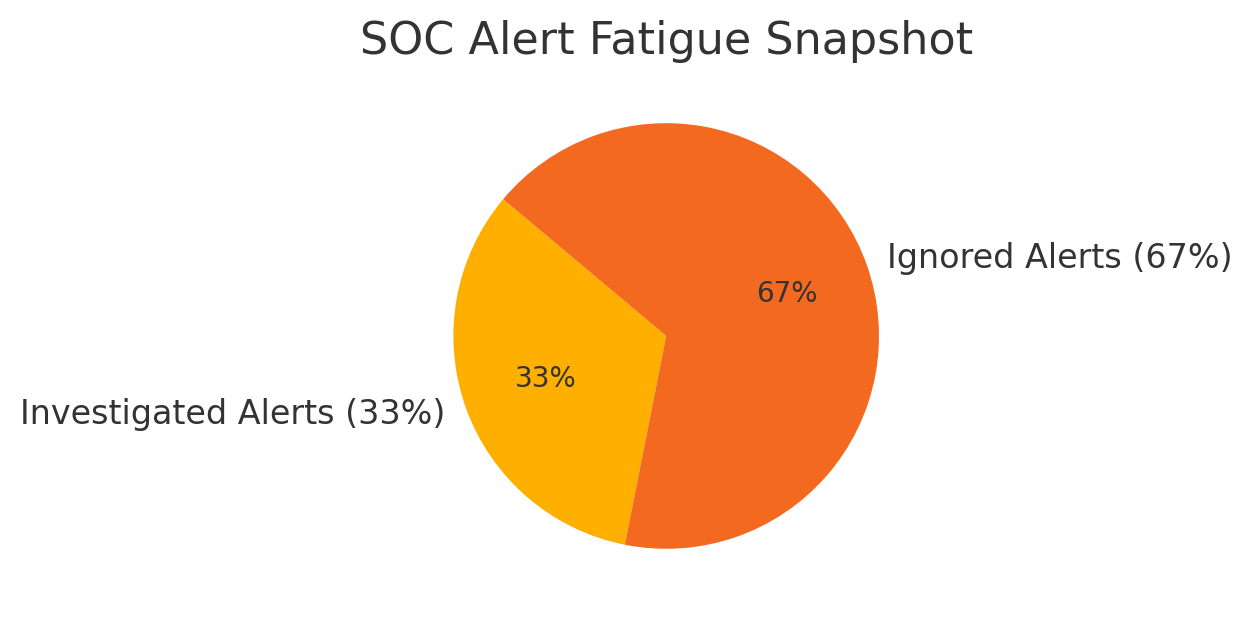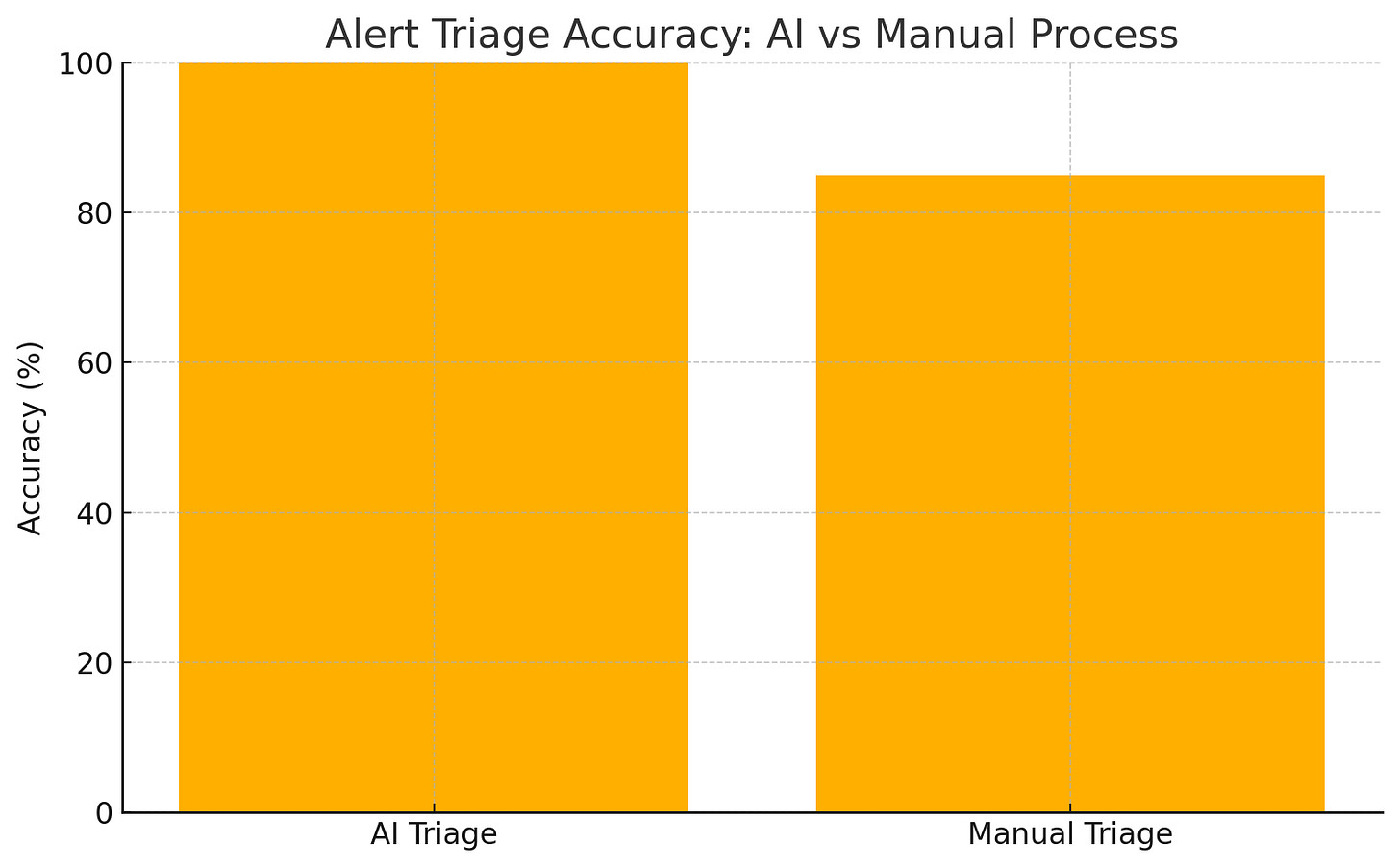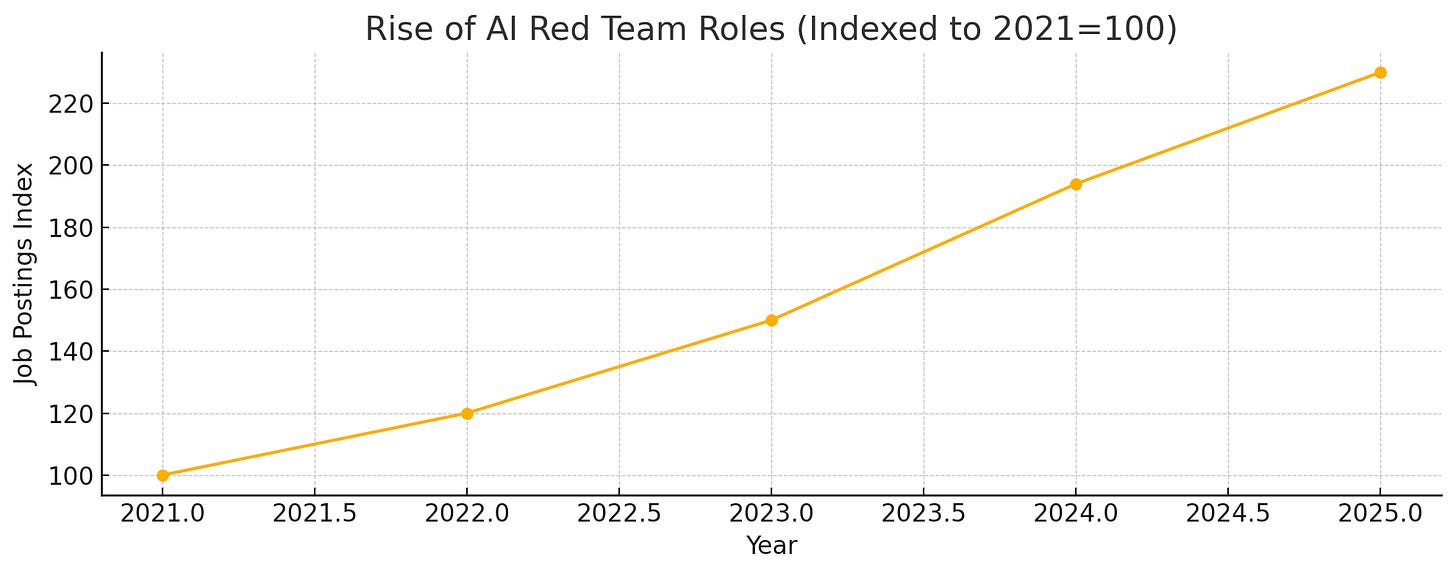Stop Chasing Ghost Jobs
The entry level security job you thought you wanted is already dead.
Why The Old Playbook Failed
Every SOC on earth drowns in alerts. Two-thirds never get a human look. A language model now sorts those events with 99.9% percent accuracy while analysts sip ther mocha-choca-latta-chinos wondering why they still work tickets instead of working threats.
Boards keep asking why we still talk about a “talent gap.” The gap is real only if you insist on hiring for duties AI now crushes. Keep that fantasy alive and you are sipping cocktails on the Titanic after it hit the iceberg.
Boot camps crank out graduates trained to follow last year’s playbooks. Universities still grade students on buffer overflows while cloud workloads spin up by the nanosecod. Meanwhile red team postings jumped almost 30% last year because firms want people who can break AI before criminals do.
The market is not short of people. It is short of the right people.
Two Roads Diverge
I wrote this for two crowds. First, the hopefuls who want a badge and a login. Second, the CISOs who need to redifine their talent strategies. You need each other. You will miss each other if you keep using yesterday’s map.
For The New Blood
Kill The Resume. Build Proof.
A neatly formatted PDF will only maybe get you through some BS applicant tracking system. A GitHub repo that shows a working log parser or a prompt that jailbreaks a public AI model will (after responsible disclosure, of course). Recruiters still stuck in keyword hell will overlook you. Good. Skip them. Send work samples straight to the hiring manager.
Learn To Talk To Machines
Large models are the new junior analysts. Your edge is asking better questions than the next person. Treat prompting like cross examination. Every bad answer is your fault for asking a lazy question.
Think Like An Adversary
Attack the model. Poison a small data set and watch it misbehave. Publish the walk‑through. Nothing signals value faster.
Write Code That Glues Tools Together
Python and shell are the duct tape of modern defense. Automate a report, hook a SOAR action, prove you can let one human swing the power of ten.
Read Outside Tech
History teaches collapse. Psychology teaches persuasion. Both matter more than memorizing port numbers.
Portfolio Checklist
• One public repo showing a security script.
• One blog post breaking down a real incident.
• One capture‑the‑flag write up.
• One prompt engineering demo.
Get those and you already outrank 90% of entry applicants. Make it a habbit and outrank 99%!
For The CISOs
We built security on the backs of cheap labor clicking buttons. AI ripped that floor out. We either reskill the crew or patch over an ever widening crack.
Cut training last year? Splunk found teams that did suffered forty five percent more breaches. Saved money on software by delaying upgrades? Only nineteen percent saw breaches. Tool sprawl hurts less than weak people.
Reallocate one glittering but underused product and fund an internal academy or apprenticeship track. Per Scholas data shows a dollar forty seven back for every dollar spent on apprentices. That beats the ROI of most shelfware.
Create New Roles Now
AI Interrogator
Owns the dialogue with models. Validates outputs, hunts bias, tunes prompts.
AI Red Teamer
Breaks models before attackers do. Crafts adversarial input, probes data poisoning paths, partners with legal on safe disclosure.
Security Automation Engineer
Turns every repeatable play into code. Lives in pipelines, not consoles.
Put these titles on your chart this quarter. Even if unfilled, the signal forces HR and academia to adapt.
Hire For Cognitive Diversity
Per Scholas cohorts are eighty seven percent people of color and forty three percent women. Those numbers beat our field’s average by miles. Teams with real diversity catch errors homogenous groups miss. Make it policy: every final slate needs at least one candidate who never worked a cyber job. Measure it like uptime.
Pair AI Spend With Upskilling
Buying a model without training users is buying a sports car and skipping driving lessons. Mandate that ten percent of every new AI line item funds staff development tied to that tool. Track mean time to contain before and after. If it does not drop, the spend failed.
Drop Degree Mandates
Many Fortune 500s are dropping degree requirements. Follow suit. Update postings to list skills and competencies…not trophies. Want a fast filter? Give candidates a mini challenge instead of a phone screen. The right minds will surface fast.
Collect the Data. Drop visuals similar to these into your next board deck. Tell the story of why your talent strategy must change.
My Bet
The safe move feels like buying one more tool and asking HR for headcount. That move is safe only until an attacker armed with the same AI breaks in before your sleepy Tier One sees the alert. I can’t tell you how many times I accounted for additional headcount into a new project initiative that involved implementing tool and the headcount never came through. All of those .1, .25, .4 FTE’s that you calculate? Yeah, those add up.
The bold move is cutting a pet tool that your team isn’t using to it’s full capacity becuase there are overlapping capabilities elsewhere, reallocating that budget to trainig, and hiring a bartender who hacks Python at night.
The bold move is telling universities to stop shipping graduates stuck in 1999 and paying apprentices while they learn under live fire.
The bold move is betting that a small team of curious generalists using AI copilots beats a bloated shift full of tired button clickers.
The challenge? Getting the not-so-human in HR teams to agree.
I choose the bold move.
Will you build the future crew or stand in line for ghost jobs yourselves?






